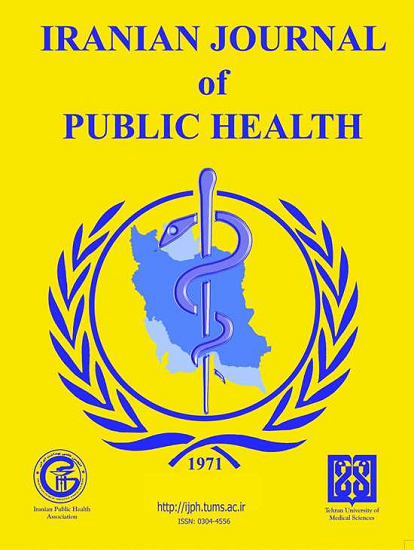Mediating Role of Physical Activity in the Relationship between Personality Traits and Body Mass Index (BMI) among the Participants of the Employees’ Health Cohort Study of Iran (EHC-SIR): A Generalized Structural Equation Modeling
Abstract
Background: Considering the high importance of the problem of obesity and its related factors, we aimed to investigate the mediating role of physical activity in the relationship between personality traits and body mass index (BMI) in the participants of the employees’ health cohort study of Iran (EHCSIR) using generalized structural equation modeling (GSEM).
Methods: A secondary analysis with cross-sectional approach was conducted on the existing data using multilevel GSEM. The primary data of the cohort was collected from July 2017, Iran University of Medical Sciences, Tehran, Iran. Personality traits were exposure, physical activity was the mediator, and BMI was the outcome. Sex was the stratifying variable. Then, pathways with the largest P values were removed one by one using backward stepwise approach.
Results: The data of a total of 3554 participants of EHCSIR were used. Sex was subjected for grouping the analysis. In males, extroversion (EX) was the only personality trait associated with both physical activity and BMI. In the direct pathway, EX was positively associated with BMI. In the indirect pathway, EX was negatively associated with BMI (P <0.1). The total effect was positive. In females, physical activity was not associated with BMI, and therefore, no indirect pathway was formed from personality traits to BMI (P >0.1).
Conclusion: The role of personality traits in obesity was more dominant in females, while in males, physical activity had a role in obesity. The hypothesized mediation pathway of the study title was not approved in females, and in males, was approved only for EX personality trait.
2. Földi M, Farkas N, Kiss S, et al (2020). Obesity is a risk factor for developing critical condition in COVID‐19 patients: a systematic review and meta‐analysis. Obes Rev, 21 (10):e13095.
3. Gona PN, Kimokoti RW, Gona CM, et al (2021). Changes in body mass index, obesity, and overweight in Southern Africa development countries, 1990 to 2019: Findings from the Global Burden of Disease, Injuries, and Risk Factors Study. Obes Sci Pract, 7 (5):509-524.
4. Vaisi-Raygani A, Mohammadi M, Jalali R, et al (2019). The prevalence of obesity in older adults in Iran: a systematic review and meta-analysis. BMC Geriatr, 19 (1):371.
5. Salimi Y, Taghdir M, Sepandi M, Karimi Zarchi AA (2019). The prevalence of overweight and obesity among Iranian military personnel: a systematic review and meta-analysis. BMC Public Health, 19 (1):162.
6. Loos RJ, Yeo GS (2022). The genetics of obesity: from discovery to biology. Nat Rev Genet, 23 (2):120-133.
7. Ruiz LD, Zuelch ML, Dimitratos SM, Scherr RE (2019). Adolescent obesity: diet quality, psychosocial health, and cardiometabolic risk factors. Nutrients, 12 (1):43.
8. Malik VS, Willett WC, Hu FB (2013). Global obesity: trends, risk factors and policy implications. Nature Rev Endocrinol, 9 (1):13-27.
9. Desai MN, Miller WC, Staples B, Bravender T (2008). Risk factors associated with overweight and obesity in college students. J Am Coll Health, 57 (1):109-114.
10. Gerlach G, Herpertz S, Loeber S (2015). Personality traits and obesity: a systematic review. Obes Rev, 16 (1):32-63.
11. Rahnamaie S, Farhadi H (2020). Psychometric properties and normalization of the Zuckerman-kuhlman-Aluja Personality Questionnaire Shortened from (ZKA-PQ/SF). Clin Psychol Personal, 18 (2):145-157.
12. Vasheghani-Farahani A, Tahmasbi M, Asheri H, et al (2011). The Persian, last 7-day, long form of the International Physical Activity Questionnaire: translation and validation study. Asian J Sports Med, 2 (2):106-16.
13. Dishman RK (2008). Gene–physical activity interactions in the etiology of obesity: behavioral considerations. Obesity (Silver Spring), 16 Suppl 3:S60-5.
14. Darbandi M, Najafi F, Pasdar Y, et al (2020). Factors associated with overweight and obesity in adults using structural equation model: mediation effect of physical activity and dietary pattern. Eat Weight Disord, 25 (6):1561-1571.
15. Pojednic R, D’Arpino E, Halliday I, Bantham A (2022). The benefits of physical activity for people with obesity, independent of weight loss: a systematic review. Int J Environ Res Public Health, 19 (9):4981.
16. Akhmad I, Heri Z, Hariadi H, et al (2024). Physical activity levels among Malaysian University and State University of Medan Students: gender difference and the influence of BMI. Retos, (60):429-438.
17. Khajeheian D, Colabi AM, Ahmad Kharman Shah NB, et al (2018). Effect of social media on child obesity: Application of structural equation modeling with the Taguchi method. Int J Environ Res Public Health, 15 (7):1343.
18. Wan Mohamed Radzi CWJ, Salarzadeh Jenatabadi H, Alanzi AR, et al (2019). Analysis of obesity among Malaysian university students: A combination study with the application of Bayesian structural equation modelling and Pearson correlation. Int J Environ Res Public Health, 16 (3):492.
| Files | ||
| Issue | Vol 54 No 6 (2025) | |
| Section | Original Article(s) | |
| DOI | https://doi.org/10.18502/ijph.v54i6.18905 | |
| Keywords | ||
| Structural equation modeling Body mass index Personality Physical activity Statistical models | ||
| Rights and permissions | |

|
This work is licensed under a Creative Commons Attribution-NonCommercial 4.0 International License. |





